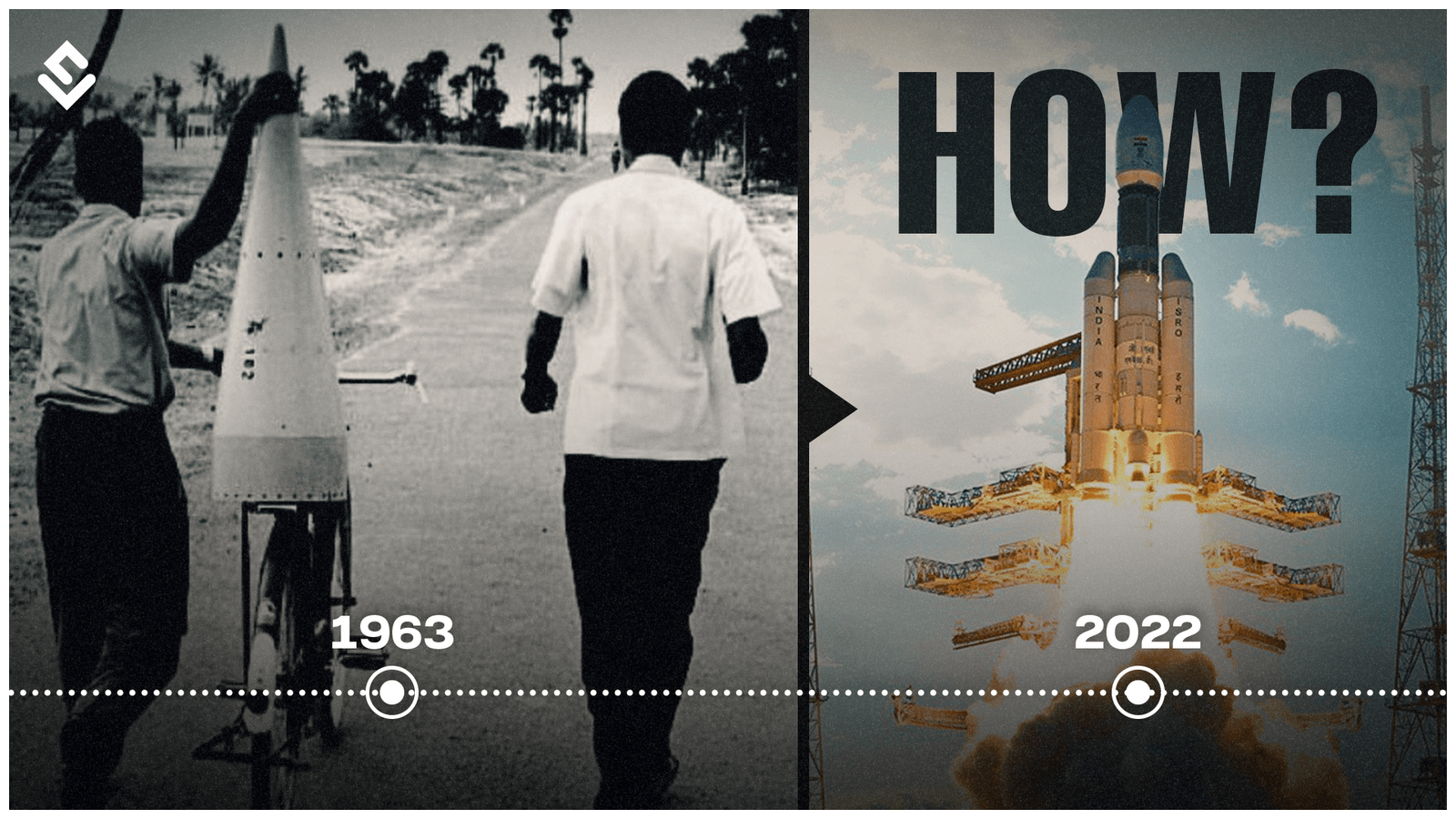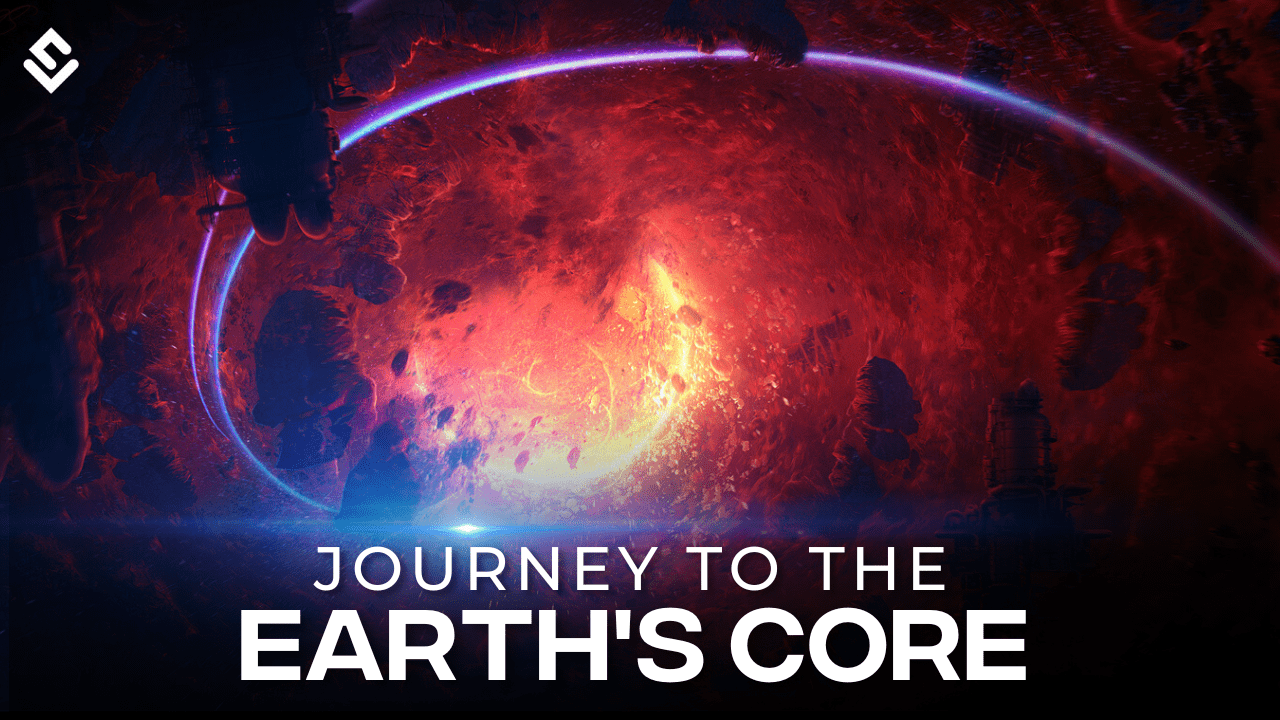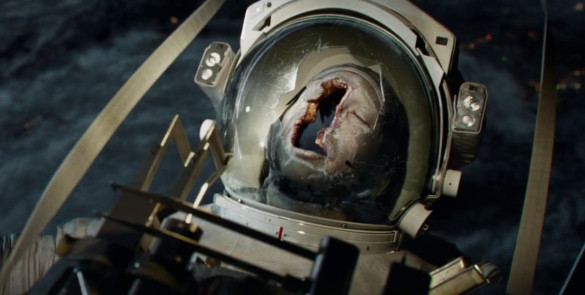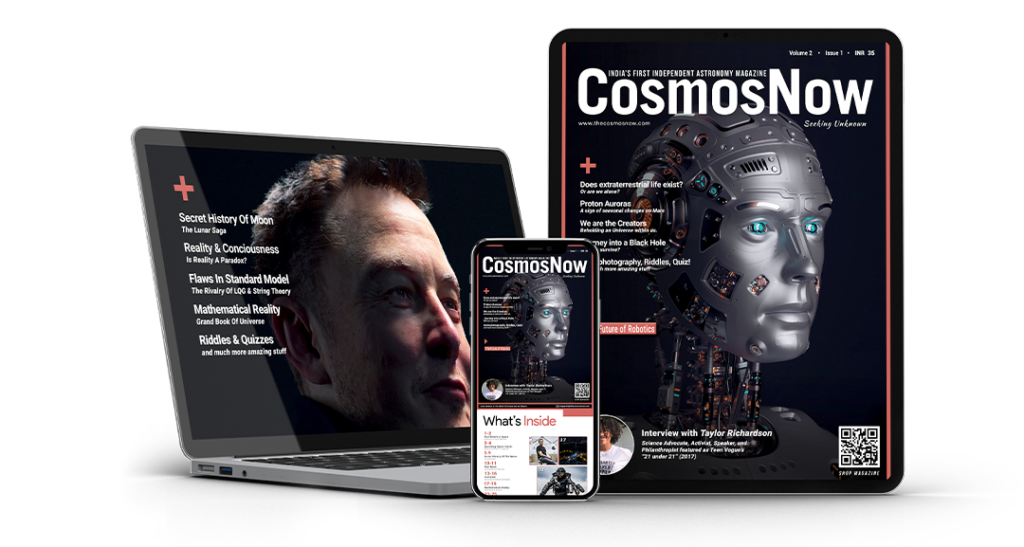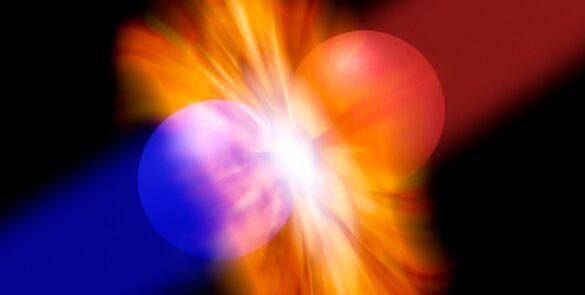How did Space Exploration begin? Then vs Now
- Team WOS
- 8 Mins Read
WOS is supported by its audience. When you purchase through links on our site, we may earn an affiliate commission “from advertisers”, while you don’t need to pay in addition.
Let’s see the history of space exploration and some important events. Watch this video for a better understanding.
The epoch of Space Exploration
Ancient humans looked at the sky, recognizing patterns among stars and naming them after their favorite gods and heroes. Greeks and Indians went some step further to say that there were numerous other worlds. It is not clear if any of them ever thought that we could even travel to those far worlds but our curiosity to know about them and to learn the effects of their presence on our world, has been going on for centuries.
Telescopes were invented later in the 17th century but our imaginations had reached the end of the universe even before. Space is a generic term we use for all other things outside the earth. Astronomically we have fixed a line for it, known as the Karman line, above which whatever lies is called to be in “Space”. Let’s see the history of space exploration and some important events.
Advent of Lenses
In the 17th century Netherlands, some great legends were living around the time. It was the century that started the use of lenses in everyday usage. The textile industry was one of the biggest industrial sectors at that time and lenses were used to examine any irregularities in the structure of the fabric.
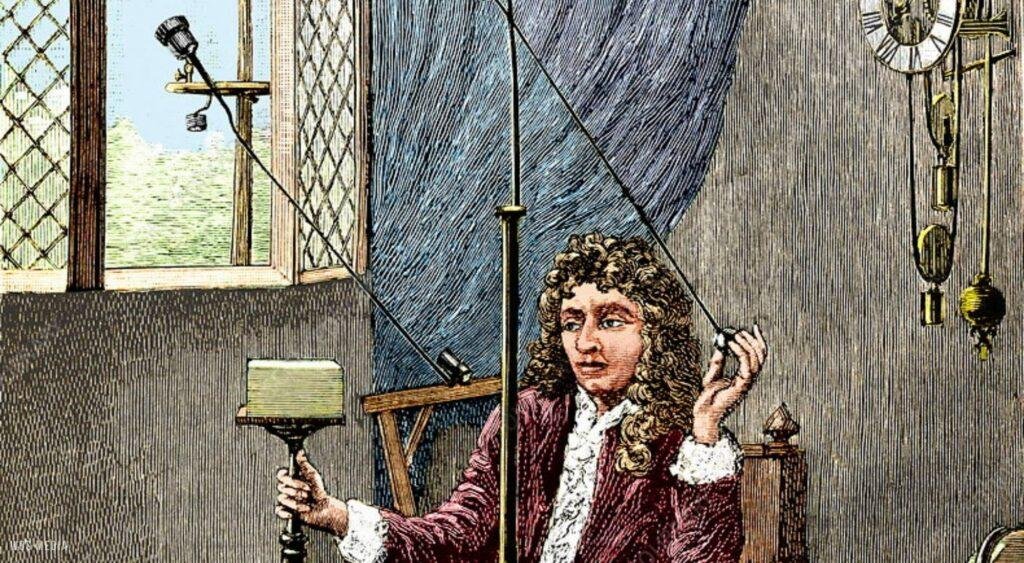
Christiaan Huygens used his lenses to show that rings were not attached to Saturn, but encircled it.
These lenses led to discoveries that revolutionized the world. Christiaan Huygens, one of the greatest physicists and astronomers used these lenses in particular combinations and began to observe the planetary systems. He was the first one to study the rings of Saturn and also discovered Titan, one of the moons of Saturn.
He surely can be called the father of space exploration. Another great man, Anton Van Leeuwenhoek used the lens not to study the above but inside. He focused on the water and observed the microbial beings there. This discovery led to the origin of microbiology. He is commonly known as the Father of Microbiology.
Discovery of Neptune
The process of zooming, and looking inside and outside, paved the way for the exploration of uncharted territories. But it was not always a telescope.
Uranus was observed to be following a slightly unusual path than what Newton’s equation predicted. There were two solutions, either Newton was incorrect or something weird is going on there. Scientists predicted that if there could be another planet in the vicinity of Uranus that must be pulling it, then the weird path of Uranus could be explained. And that’s how Neptune was discovered.
The Space Race
It was only a long-distance relationship between humans and space but after World War 2 ended and the Iron Curtain divided eastern and Western Europe, a new race started under the pretext of the Cold war. This race is famously called the Space Race.
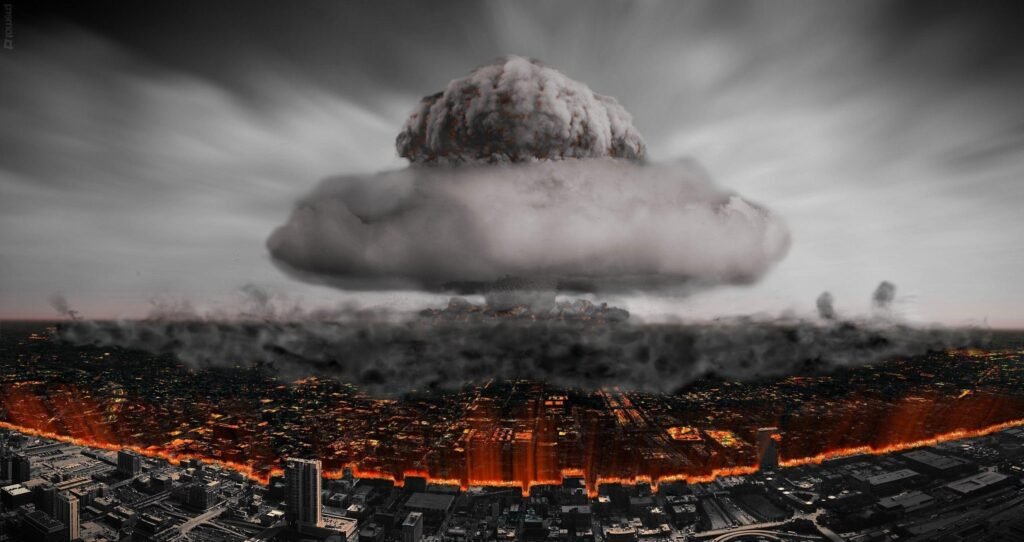
Tsar Bomba was the most powerful nuclear bomb in history. The blast was more powerful than 50 million tons of TNT and was felt hundreds of miles away.
The space race followed the nuclear race. Clearly, the Soviets won the nuclear race when they dropped the Tsar Bomba on a secluded island that produced the biggest explosion to date.
Be it a nuclear race or space race, the world became a battlefield of knowledge. Science got entangled with politics. In 1947, Bumper WAC was the first manmade object to enter space. Interestingly, it was the Soviets again who was winning and this was quite an embarrassment for the Americans.
USA Vs Russia
Russians launched the first manmade object to orbit the earth. It was Sputnik launched on 4 October 1957. Not long after, the first man to enter the space was Yuri Gagarin who did this in 1961. It was a big moment for humanity as a whole but surely a defeat for US’s space program.
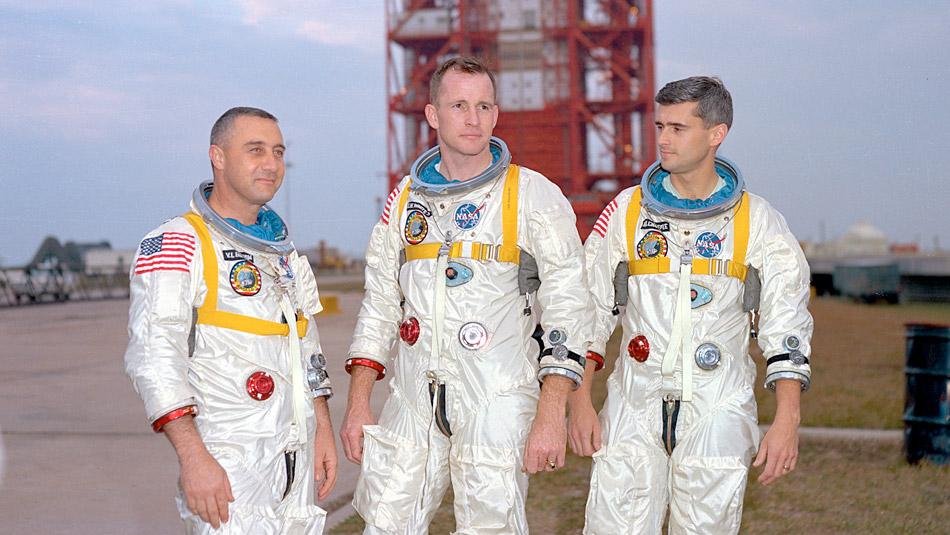
On Jan. 27, 1967, veteran astronaut Gus Grissom, first American spacewalker Ed White and rookie Roger Chaffee (left-to-right) were preparing for what was to be the first manned Apollo flight. Image Credit: NASA
Before this, it was the Soviets again who launched the first living being in space in 1957. The first spacewalk could have been America’s achievement but Russians overtook it too. Alexei Leonov performed the first spacewalk in 1965.
Meanwhile, the USA started its Apollo missions. There were a total of 17 missions in this program named Apollo-1 to Apollo-17, with only two failures in Apollo-1 and Apollo-13. It was this mission that made the USA get some success in this space race but it was a big one. That single achievement, as Neil Armstrong famously said, “A small step of man but a giant leap for mankind”.
On 16th July 1969, the Apollo 11 mission started. 3 men- Neil Armstrong, Buzz Aldrin, and Michael Collins on board the Saturn V vehicle plunged into space and landed on the Moon. The event was broadcasted on television. It was something never achieved or thought of.
This single event helped the USA win the space race. The whole world became one. Someone was looking at our world from a different ball in space. They spent some time there and returned safely to earth. After that, 5 more missions went to the moon and a total of 12 people landed there, contrary to the common misconception that why nobody got there again. Surely there are many conspiracy theories around the moon landing but that will be discussed in some other article.
International Space Station & Human Missions
Just two years after this landmark event, the Soviet Union again achieved one of its firsts. The first space station named Salyut 1 was launched in 1971. Now we have the biggest man-made object, the International space station orbiting the earth at 7.6 km/sec and completing one circle every 92 minutes.
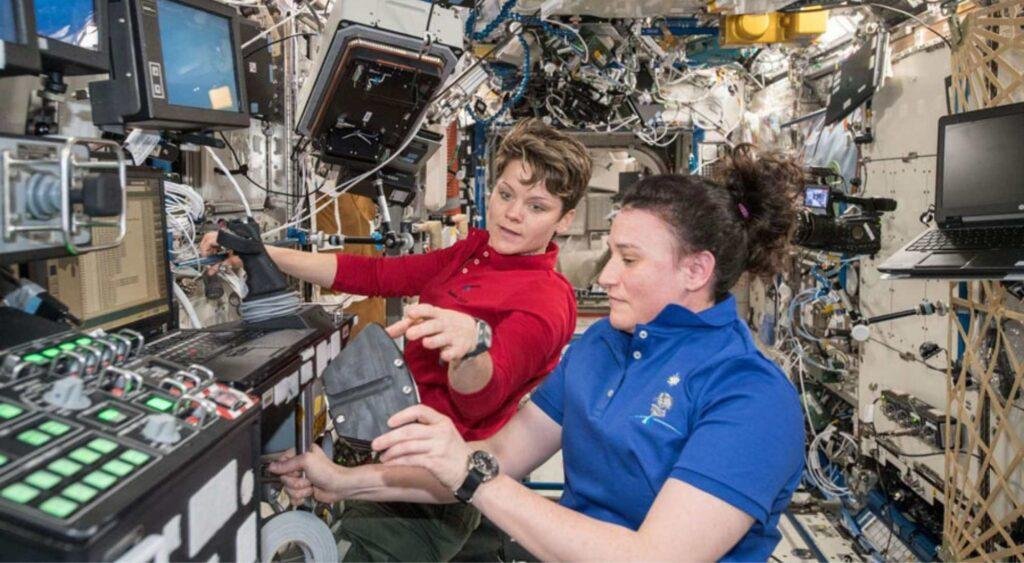
Expedition 57 Flight Engineer Serena Auñón-Chancellor is pictured mixing protein crystal samples aboard the International Space Station to help scientists understand how they work. Image Credit: NASA
Astronauts are always onboard this station and it’s quite useful in doing many experiments in a microgravity environment.
After the 1970s, human missions were generally discarded and space agencies opted for spacecraft and satellites to study the outer planets. One such expedition was Venera which was sent to study the planet Venus.
Five of those hundreds of spacecraft launched have achieved enough escape velocity to exit the heliosphere and thus they are no more in the solar system.
Beyond the Solar System
Pioneer 10 was launched in 1972 and it was the first to achieve such escape velocity. It was the first spacecraft to reach Jupiter. Some months after its launch, its successor Pioneer 11 was launched and it became the first to probe Saturn.
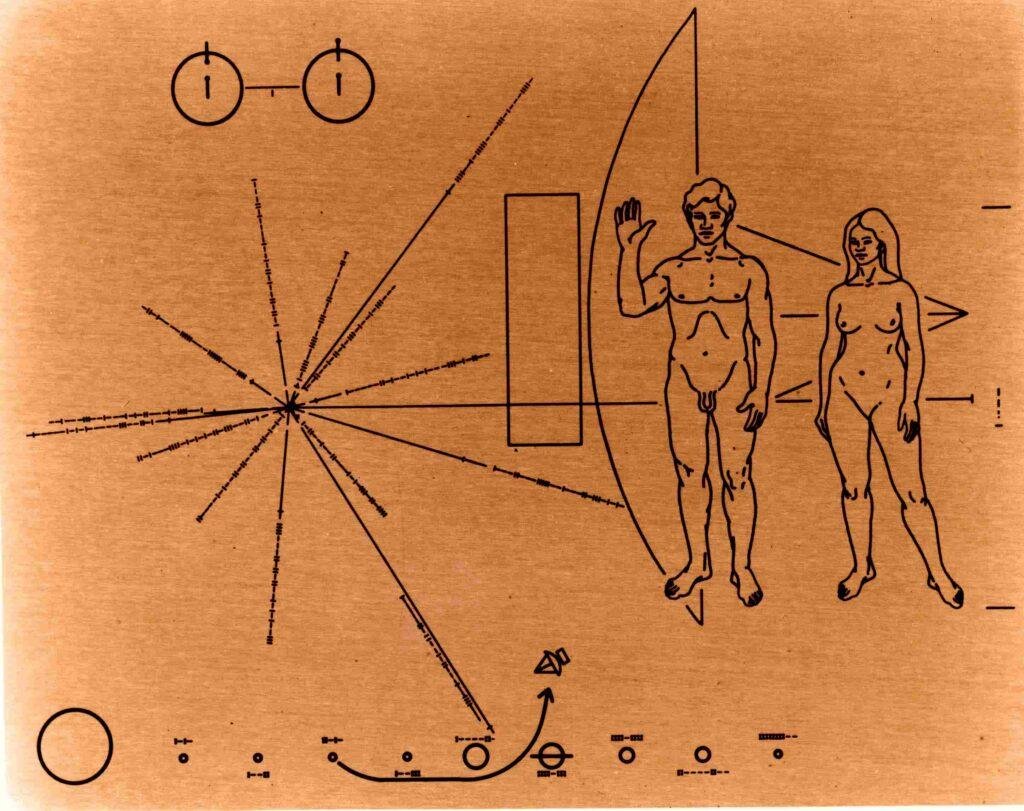
The golden plaque was the brainchild of Carl Sagan who wanted any alien civilization who might encounter the craft to know who made it and how to contact them. Credit: NASA Ames
Along with Pioneer 11, scientists send a gold-aluminum plated plaque. This plaque contains the image of naked males and females depicting the ruling organism of the planet. It also contains the symbolic diagram denoting the distance of our sun in relation to the distance of different pulsars present around us, so that if an alien civilization ever gets hold of this spacecraft, they will decode the pattern and know the position of earth from where it was sent.
Voyager 1 and 2 were the next set of twin spacecraft launched in August and September in the year 1977. They were the first to probe Neptune. Voyager 2 left the heliosphere in 2018 and is still active in sending information about its position. If it continues to do so, then in about 296,000 years it will reach the brightest star in our sky, Sirius.
Space exploration has a vast history and various achievements during its course. Some more events will be discussed later in future articles.
What are your thoughts on the history of space exploration and these notable achievements? Let us know in the comments.
Share this article
Team WOS
We make people fall in love with science.
Share this article
Neil deGrasse TysonThe Universe is under no obligation to make sense to you.
Latest posts
We have learned many partial truths and some remain with us even when we are studying higher courses. Let’s look up such partial truths that are very common...
How do the animals and birds view the world around them? Do they perceive everything just like a human? Let's understand the basic anatomy of the eyes of...
What will the conditions be for the human body in space? How much difference a human being would feel while being in space? Space is scary and lonely, and conditions are...
Here is a list of the best science books that'll take you deep into the ocean of science. Books fueled the mighty revolutions in human history and produced...
World's most renowned scientists think that the cosmos has quantum consciousness. First of all, what exactly is consciousness? Scientists are actively engaged experimental tests of these ideas. One approach is to study brain-impaired patients to see if their information...
Trending Articles
Climate has changed in the past on its own but modern pollution has been its severe accelerator. Let’s look at some of the huge disasters that happened in the past few years due to climate change.
Is ISRO The Best Space Agency? ISRO's incredible journey is the story of India’s jump to orbit! In 1962, APJ Abdul Kalam was selected for the job of rocket engineer at the Indian Committee for Space Research (INCOSPAR)...
Here is a list of the best science books that'll take you deep into the ocean of science. Books fueled the mighty revolutions in human history and produced...
Big Bang nucleosynthesis created equal numbers of matter and antimatter. Antimatter is negative counterpart of matter, having the same mass but opposite...
How did the universe begin? Let’s dive deep into the origin of the Universe and the weirdest theories about it. For example, let’s go to ancient Greece. From...
The animal kingdom has evolved from unicellular organisms to gigantic dinosaurs and intelligent social animals, like us, Human beings! Throughout this evolutionary history, different species have left some characteristics or gained something new depending upon















